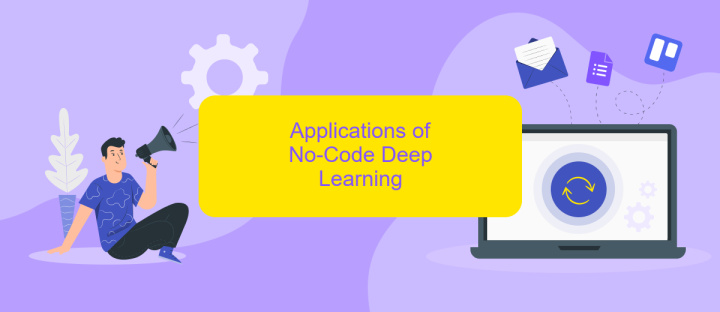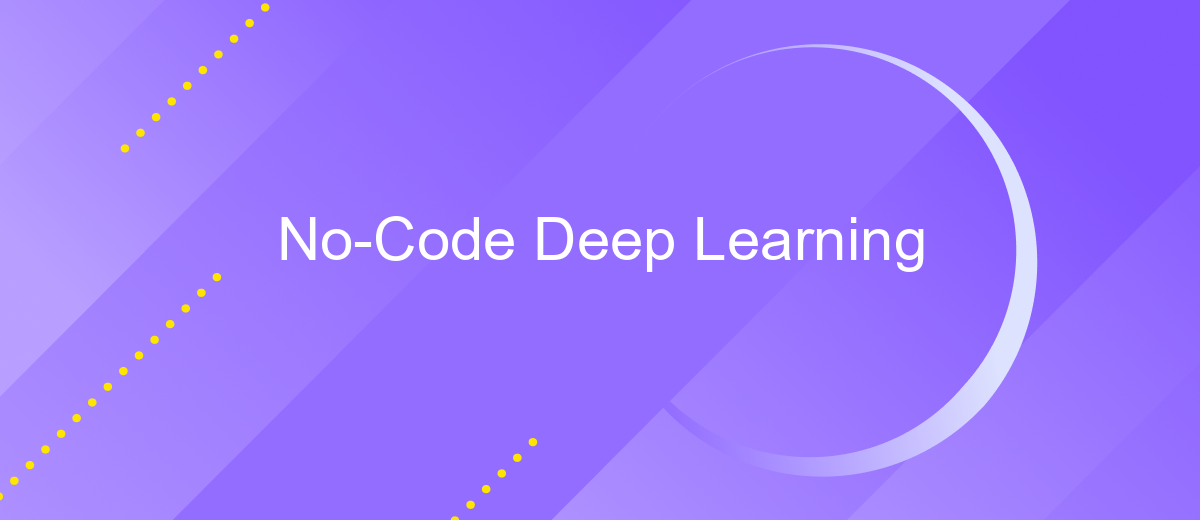No-Code Deep Learning
The advent of no-code deep learning platforms has revolutionized the field of artificial intelligence by democratizing access to powerful AI tools. These platforms enable users with little to no programming experience to build, train, and deploy sophisticated deep learning models. This article explores the rise of no-code deep learning, its benefits, and its impact on various industries.
Introduction
No-code deep learning is revolutionizing the way individuals and businesses approach artificial intelligence. By eliminating the need for extensive programming skills, these platforms democratize access to powerful AI tools, enabling a wider range of users to develop and deploy deep learning models with ease.
- Ease of Use: No-code platforms provide intuitive interfaces that simplify the model-building process.
- Accessibility: These tools are designed for users with varying levels of technical expertise.
- Efficiency: Rapid prototyping and deployment reduce the time and cost associated with traditional AI development.
One of the key aspects of no-code deep learning is the ability to integrate various data sources and services seamlessly. Tools like ApiX-Drive facilitate this by offering straightforward integration solutions, allowing users to connect their deep learning models with other applications effortlessly. This synergy enhances the overall functionality and utility of no-code AI platforms, making them an invaluable resource for modern enterprises.
Benefits of No-Code Deep Learning

No-code deep learning platforms democratize access to advanced AI technologies, allowing individuals without a technical background to build and deploy models. These platforms eliminate the need for extensive coding knowledge, enabling faster prototyping and reducing the time required to bring AI solutions to market. This accessibility fosters innovation across various industries, as more people can experiment with and implement deep learning solutions.
Furthermore, no-code platforms often come with built-in integrations and automation tools that streamline workflows. For instance, services like ApiX-Drive facilitate seamless integration between different applications, ensuring smooth data flow and enhancing overall efficiency. By leveraging such integrations, users can focus more on refining their models and less on the technical complexities of data management. Consequently, no-code deep learning not only accelerates the development process but also enhances productivity and innovation.
Applications of No-Code Deep Learning

No-code deep learning platforms are revolutionizing the way individuals and businesses approach machine learning by removing the need for extensive programming knowledge. These platforms empower users to build, train, and deploy models with minimal effort, making advanced AI accessible to a broader audience.
- Automated Data Analysis: No-code tools can quickly analyze large datasets, uncovering patterns and insights without manual intervention.
- Customer Service Automation: Chatbots and virtual assistants can be developed to handle customer inquiries, improving response times and customer satisfaction.
- Predictive Maintenance: In industrial settings, no-code deep learning can predict equipment failures, reducing downtime and maintenance costs.
- Image and Video Recognition: These platforms can be used to develop applications for identifying objects, faces, and even emotions in multimedia content.
- Integration with Other Services: Tools like ApiX-Drive facilitate seamless integration of no-code deep learning models with various business applications, enhancing workflow automation and data synchronization.
By leveraging no-code deep learning, businesses can accelerate innovation and operational efficiency without the need for specialized technical skills. This democratization of AI technology opens up new possibilities for small and medium-sized enterprises to compete with larger organizations in the digital age.
Challenges and Limitations

While no-code deep learning platforms offer numerous advantages, they are not without challenges and limitations. One significant challenge is the lack of flexibility compared to traditional coding methods. These platforms often provide a limited set of pre-built models and functionalities, which may not be sufficient for more complex or customized tasks.
Another limitation is the dependency on the platform's updates and support. Users are often at the mercy of the platform developers for new features, bug fixes, and performance improvements. This can be a bottleneck for projects requiring rapid iteration and adaptation to new research findings.
- Limited customization options
- Dependence on platform updates
- Potential performance constraints
- Integration challenges with existing systems
Integration with other tools and services can also be problematic. For instance, while platforms like ApiX-Drive offer solutions to streamline integrations, they may not cover all specific needs or require additional configuration. As a result, users might face hurdles in creating seamless workflows, potentially affecting the overall efficiency of their projects.
Future of No-Code Deep Learning
The future of no-code deep learning is poised to revolutionize the way individuals and businesses approach artificial intelligence. With the rapid advancements in user-friendly platforms, even those without extensive technical backgrounds can now develop, train, and deploy deep learning models. This democratization of AI technology opens doors to innovation across various industries, from healthcare to finance, by making sophisticated tools accessible to a broader audience. As these platforms continue to evolve, we can expect more intuitive interfaces and robust capabilities that further simplify the process of creating powerful AI solutions.
Moreover, the integration of no-code deep learning with other services is becoming increasingly seamless. Tools like ApiX-Drive enable users to automate workflows and connect their AI models with various applications, enhancing efficiency and productivity. By leveraging such integration services, businesses can streamline operations and harness the full potential of their AI models without needing to invest in specialized development teams. The future holds great promise for no-code deep learning, as it continues to break down barriers and empower more people to innovate and solve complex problems with AI.
FAQ
What is No-Code Deep Learning?
Who can benefit from No-Code Deep Learning?
What are some common applications of No-Code Deep Learning?
How do I integrate No-Code Deep Learning models into my existing systems?
Are there any limitations to using No-Code Deep Learning platforms?
Do you want to achieve your goals in business, career and life faster and better? Do it with ApiX-Drive – a tool that will remove a significant part of the routine from workflows and free up additional time to achieve your goals. Test the capabilities of Apix-Drive for free – see for yourself the effectiveness of the tool.

